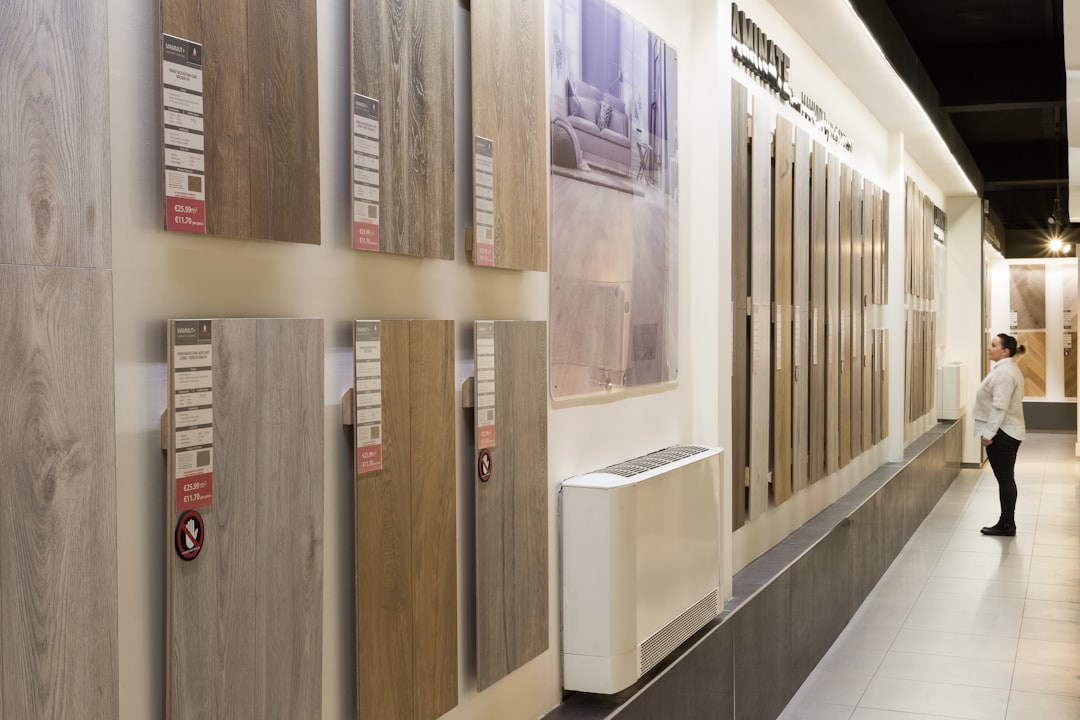Customer acquisition cost (CAC) is a crucial metric that every business should track and optimize. It refers to the amount of money a company spends to acquire a new customer. Understanding and optimizing this metric is essential for businesses to effectively allocate their marketing budget, improve their marketing strategies, and ultimately drive growth.
By calculating the CAC, businesses can gain valuable insights into their customer acquisition process. This metric takes into account all the costs associated with acquiring new customers, including marketing expenses, sales team salaries, advertising costs, and any other expenses directly related to acquiring customers. By analyzing the CAC, companies can identify any inefficiencies or areas of improvement in their customer acquisition process.
Optimizing the CAC involves finding ways to reduce the cost per customer acquisition while still maintaining or increasing the quality of acquired customers. This can be accomplished through various strategies, such as targeting more qualified leads, improving conversion rates, optimizing marketing campaigns, and leveraging data-driven insights. By continuously monitoring and optimizing the CAC, businesses can enhance their return on investment (ROI) and achieve sustainable growth in the long run.## What is Customer Acquisition Cost (CAC)?
Customer Acquisition Cost (CAC) is a key metric that helps businesses understand how much it costs them to acquire a new customer. It measures the total investment a company makes to convince a potential customer to make a purchase. By calculating the CAC, companies can evaluate the effectiveness of their marketing and sales efforts and make informed decisions to optimize their customer acquisition strategies.
Understanding the CAC is crucial because it provides businesses with insights into the viability and profitability of their customer acquisition activities. By monitoring and analyzing this metric, companies can determine the success of their marketing campaigns, allocate their resources effectively, and ultimately improve their bottom line.
Here are a few key points about Customer Acquisition Cost (CAC):
Definition: CAC is calculated by dividing the total marketing and sales expenses incurred within a specific period by the number of new customers acquired during that same period. The formula can be represented as: CAC = Total Marketing and Sales Expenses / Number of acquired customers.
Importance: CAC allows businesses to assess the financial impact of their customer acquisition efforts. It helps them identify the most cost-effective channels and strategies to acquire new customers, enabling them to optimize their marketing spend and maximize their return on investment (ROI).
Benchmarking: In order to determine if their CAC is in line with industry standards and competitors, companies can compare their CAC with industry benchmarks and historical data. This enables them to identify areas for improvement and make data-driven decisions to reduce their customer acquisition costs.
Lifetime Value (LTV): CAC should not be analyzed in isolation; it is best understood when compared to the Lifetime Value (LTV) of a customer. LTV represents the predicted revenue a business can expect to generate from a customer over the course of their relationship. By comparing the CAC to the LTV, companies can ensure that their customer acquisition efforts are financially sustainable in the long run.
Understanding and optimizing the Customer Acquisition Cost (CAC) is crucial for businesses looking to grow sustainably and maximize their profitability. By measuring and analyzing their CAC, they can identify areas for improvement, make informed decisions, and develop effective strategies to acquire and retain valuable customers.
Why is Customer Acquisition Cost Important?
Customer acquisition cost (CAC) is a vital metric that businesses use to understand the effectiveness of their marketing and sales efforts. It measures the average cost incurred by a company to acquire a new customer during a specific period, usually the lifetime of the customer's relationship with the business. This metric plays a crucial role in the overall financial health and profitability of a company.
Below are several reasons why understanding and optimizing customer acquisition cost is important:
Operational Efficiency: By calculating and analyzing CAC, businesses can identify areas of their marketing and sales processes that may need improvement. This includes evaluating the effectiveness of different marketing channels, optimizing advertising campaigns, and investing resources in initiatives that yield the highest return on investment (ROI).
Budget Allocation: Having an accurate understanding of CAC helps companies effectively allocate their marketing budget. By analyzing the performance and cost-effectiveness of different customer acquisition channels, businesses can prioritize their resources and focus on initiatives that bring the most value for their investment, thus minimizing unnecessary spending on unproductive channels.
Pricing and Profitability: CAC is an essential factor in determining the optimal pricing strategy for products or services. By taking into account the cost of acquiring customers, companies can set prices that not only cover their expenses but also allow for healthy profit margins. Businesses can also assess the profitability of different customer segments and adjust their marketing and sales strategies accordingly.
Forecasting Growth: Tracking CAC over time enables businesses to forecast future growth and set realistic projections. By analyzing trends and patterns in customer acquisition costs, companies can gain insights into the scalability of their marketing efforts. This information is invaluable when planning expansion strategies, allocating resources, and making strategic business decisions.
Understanding and optimizing customer acquisition cost is a continuous process that requires monitoring, analysis, and adjustment. By carefully managing CAC, businesses can improve operational efficiency, allocate marketing budgets effectively, establish optimal pricing, and make informed decisions that contribute to long-term growth and profitability.
| Key Takeaways |
|---|
| CAC measures the average cost incurred to acquire a new customer. |
| Understanding CAC helps identify areas for improvement in marketing and sales processes. |
| Optimizing budget allocation and pricing decisions is possible with CAC analysis. |
| CAC data assists in forecasting growth and making informed strategic decisions. |
Calculating Customer Acquisition Cost
To effectively optimize customer acquisition and drive business growth, it is crucial to have a deep understanding of the customer acquisition cost (CAC). The CAC is a metric that quantifies the average amount of money required to acquire a new customer. By calculating this metric, companies can make informed decisions about their marketing strategies and allocate their resources more efficiently. In this section, we will delve into the process of calculating the CAC and its significance in business operations.
Calculating the CAC involves determining the total marketing and sales expenses incurred within a specific period and dividing it by the number of new customers acquired during that same period. The formula for CAC can be represented as follows:
CAC = Total Marketing and Sales Expenses / Number of New Customers Acquired
It is important to note that the CAC calculation should only include costs directly associated with customer acquisition activities, such as advertising, marketing campaigns, personnel salaries, and software expenses. Other expenses, such as product development or administrative costs, should be excluded from this calculation.
To ensure accuracy and reliability, it is advisable to gather data from multiple sources and time periods. By analyzing CAC trends over time, companies can identify fluctuations and make necessary adjustments to their acquisition strategies.
Understanding the CAC is crucial because it provides useful insights into the cost-effectiveness of various marketing channels. By comparing the CAC across different channels, companies can identify the most efficient and cost-effective methods for acquiring new customers. This information can guide decision-making processes when reallocating marketing budgets or exploring new avenues for customer acquisition.
Furthermore, the CAC can serve as a benchmark for evaluating the profitability of different customer segments. By comparing the CAC against the customer lifetime value (CLV), companies can determine which customer segments are generating the highest returns on investment. This analysis helps in resource allocation, as companies can focus their efforts on attracting and retaining customers with higher CLVs, ultimately driving business growth.
In conclusion, calculating the CAC is a vital step in understanding and optimizing customer acquisition strategies. By accurately measuring and analyzing this metric, companies can make data-driven decisions to allocate resources effectively, identify the most cost-efficient marketing channels, and focus on customer segments that generate the highest returns.
Factors Impacting Customer Acquisition Cost
The customer acquisition cost (CAC) is a crucial metric that measures the cost incurred by a company to acquire new customers. Understanding the factors that impact CAC is essential for optimizing this metric and improving overall marketing and sales strategies. Here are some of the key factors that can influence CAC:
1. Marketing and Advertising Channels: The choice of marketing and advertising channels can have a significant impact on CAC. Different channels have varying costs and effectiveness in reaching the target audience. By analyzing the performance of different channels, businesses can identify the most cost-effective ones and allocate their resources accordingly.
2. Target Audience: The characteristics and behaviors of the target audience can also influence CAC. The more targeted and relevant the marketing efforts, the higher the likelihood of acquiring customers at a lower cost. Understanding the target audience's preferences, needs, and pain points helps businesses tailor their marketing messages and campaigns for maximum impact.
3. Sales and Conversion Processes: The effectiveness of the sales and conversion processes can impact CAC. If the sales team is inefficient or lacks proper training, it could result in lost opportunities and higher costs. Improving sales processes, streamlining the customer journey, and increasing conversion rates can help reduce CAC.
4. Customer Lifetime Value (CLV): The CLV, or the predicted revenue generated by a customer over their lifetime, is closely tied to CAC. If the CLV is high, businesses can afford to invest more in acquiring customers. On the other hand, if the CLV is low, businesses should strive to reduce CAC to maintain profitability.
5. Competition: The level of competition in the market can impact CAC. In highly competitive industries, businesses may need to invest more in marketing and advertising to attract customers and stand out from competitors. Understanding the competitive landscape and developing unique value propositions can help businesses optimize CAC.
6. Seasonality and Market Conditions: Seasonality and market conditions can also affect CAC. For example, during peak seasons or when demand is high, businesses may need to increase marketing budgets to acquire customers. Monitoring market conditions and adjusting marketing strategies accordingly can help optimize CAC throughout the year.
Understanding and optimizing the factors impacting CAC is crucial for businesses looking to improve their customer acquisition strategies. By analyzing data, monitoring trends, and constantly refining marketing and sales efforts, businesses can reduce CAC and enhance their overall profitability.
Strategies to Optimize Customer Acquisition Cost
To optimize the customer acquisition cost (CAC), businesses need to implement effective strategies that focus on maximizing returns while minimizing expenses. Here are some proven strategies to achieve this:
1. Define Target Audience: Identifying the right target audience is crucial for optimizing CAC. A well-defined target audience helps in tailoring marketing efforts to reach the most relevant customers, reducing wasteful spending on uninterested prospects.
2. Enhance Marketing Efficiency: By continuously refining marketing efforts, businesses can improve their CAC. This involves evaluating and optimizing marketing channels, messages, and campaigns to maximize their impact. Allocating resources to the most effective channels and leveraging data-driven insights can enhance marketing efficiency.
3. Improve Lead Generation: High-quality leads are more likely to convert into paying customers, leading to a lower CAC. Implementing lead generation strategies that attract qualified prospects can significantly optimize CAC. This may involve creating compelling content, utilizing SEO techniques, running targeted advertising campaigns, or leveraging networking opportunities.
4. Utilize Conversion Rate Optimization (CRO) Techniques: Boosting the conversion rate of leads into customers can help optimize CAC. Businesses can achieve this by analyzing customer behavior, optimizing landing pages, simplifying the conversion process, and implementing A/B testing to identify the most effective strategies.
5. Implement Customer Retention Strategies: Acquiring new customers can be more costly than retaining existing ones. By focusing on customer retention and loyalty, businesses can enhance their profitability. Keeping customers satisfied and engaged through personalized communication, excellent customer service, loyalty programs, and post-sales support can lead to higher customer lifetime value and decreased CAC over time.
By implementing these strategies, businesses can effectively optimize their customer acquisition cost, ensuring efficient allocation of resources and improved profitability. Regular monitoring, analysis, and adaptation will allow companies to stay ahead of the competition and maintain a healthy CAC in the long run.
| Strategy | Description |
|---|---|
| Define Target Audience | Identifying the most relevant and interested audience to focus marketing efforts on. |
| Enhance Marketing Efficiency | Continuously refining and optimizing marketing channels, messages, and campaigns for maximum impact. |
| Improve Lead Generation | Attracting high-quality leads through tailored content, SEO, advertising campaigns, and networking. |
| Utilize Conversion Rate Optimization (CRO) Techniques | Analyzing and optimizing customer behavior, landing pages, and conversion processes for higher conversion rates. |
| Implement Customer Retention Strategies | Focusing on customer satisfaction, loyalty programs, and post-sales support to retain existing customers. |
Measuring the Effectiveness of CAC Optimization
Optimizing the Customer Acquisition Cost (CAC) is crucial for any business striving for sustainable growth and profitability. Once the CAC has been optimized, it is essential to measure the effectiveness of the optimization efforts to ensure that the desired outcomes are being achieved. This measurement enables businesses to make data-driven decisions and fine-tune their strategies for improved acquisition efficiency.
Tracking Key Metrics
To measure the effectiveness of CAC optimization, businesses should focus on tracking key metrics that provide insights into the performance of their acquisition strategies. These metrics include:
1. CAC Ratio:
The CAC ratio compares the lifetime value (LTV) of a customer to the cost of acquisition. By dividing the LTV by the CAC, businesses can assess the profitability of their acquisition efforts. A higher CAC ratio indicates a more efficient acquisition strategy.
2. Return on Advertising Spend (ROAS):
ROAS measures the revenue generated through advertising campaigns compared to the cost of those campaigns. It helps businesses evaluate the effectiveness of their advertising efforts and identify areas for improvement.
3. Conversion Rates:
Monitoring conversion rates at each stage of the acquisition funnel helps identify bottlenecks and optimize conversion strategies. Improving conversion rates at each stage can lead to a more cost-effective acquisition process.
Conducting A/B Tests
A/B testing is an effective method for measuring the effectiveness of CAC optimization strategies. By running controlled experiments, businesses can compare the performance of different strategies and determine which approach yields the best results. When conducting A/B tests, it is important to:
- Clearly define the goals of the test.
- Test only one variable at a time to isolate its impact.
- Gather sufficient data to ensure statistical significance.
- Analyze the results of the test and draw actionable insights.
Utilizing Analytics Tools
To facilitate the measurement of CAC optimization effectiveness, businesses can employ various analytics tools. These tools provide valuable data and insights into customer behavior, acquisition channels, and campaign performance. By utilizing analytics tools, businesses can:
- Identify the most effective acquisition channels and allocate resources accordingly.
- Understand customer segments and tailor acquisition strategies to target specific demographics.
- Optimize advertising campaigns based on real-time data and make timely adjustments to maximize ROI.
Overall, measuring the effectiveness of CAC optimization is crucial for businesses to understand the impact of their acquisition strategies and make data-driven decisions. By tracking key metrics, conducting A/B tests, and utilizing analytics tools, businesses can continually refine their acquisition efforts, ensuring they are efficient, cost-effective, and driving sustainable growth.
Table 1: Key Metrics for Measuring CAC Optimization Effectiveness
| Metric | Definition |
|---|---|
| CAC Ratio | Lifetime value (LTV) divided by Customer Acquisition Cost (CAC) |
| ROAS | Revenue generated from advertising campaigns divided by the cost of those campaigns |
| Conversion Rates | Percentage of visitors that convert at each stage of the acquisition funnel |
Customer Lifetime Value (CLV) and CAC
Customer Lifetime Value (CLV) and Customer Acquisition Cost (CAC) are two vital metrics that businesses need to understand and optimize in order to maximize their profitability.
Customer Lifetime Value refers to the total amount of revenue a customer brings to a business over the course of their relationship. It takes into account factors such as the average purchase value, frequency of purchases, and the length of the customer's relationship with the business. Calculating the CLV helps businesses determine the long-term profitability of acquiring and retaining customers.
Customer Acquisition Cost (CAC), on the other hand, represents the amount of money spent by a business to acquire a new customer. This includes marketing expenses, sales team salaries, advertising costs, and any other expenses directly associated with customer acquisition. By calculating the CAC, businesses can evaluate the effectiveness and efficiency of their acquisition strategies.
Understanding the relationship between CLV and CAC is crucial for businesses in determining the success of their marketing and customer acquisition efforts. If the CAC exceeds the CLV, it indicates that the business is spending more to acquire customers than they are generating in revenue from them. This scenario is unsustainable and can lead to financial challenges in the long run.
Conversely, if the CLV exceeds the CAC, it signifies that the business is generating more revenue from customers than it is spending to acquire them. This is an ideal situation, as it suggests a positive return on investment and a healthy growth trajectory.
To optimize these metrics, businesses can employ several strategies:
- Enhancing customer loyalty and retention: By prioritizing customer satisfaction and implementing loyalty programs, businesses can increase the CLV while reducing the need for continuous customer acquisition efforts.
- Refining marketing tactics: Analyzing the data on customer acquisition channels can help identify the most effective marketing strategies and allocate resources accordingly, reducing the overall CAC.
- Improving customer targeting: By focusing on reaching the right audience and targeting specific customer segments, businesses can optimize their marketing spend and increase the likelihood of acquiring high-value customers with a higher CLV.
By continuously monitoring and analyzing the CLV and CAC, businesses can refine their customer acquisition strategies over time, leading to improved financial performance and sustainable growth.
| Key Points to Remember: |
|---|
| - CLV is the total revenue a customer generates over their relationship with a business. |
| - CAC represents the cost associated with acquiring a new customer. |
| - CLV > CAC indicates a positive return on investment. |
| - Enhancing customer loyalty and refining marketing tactics can optimize these metrics. |
Benchmarking and Industry Standards for CAC
The Customer Acquisition Cost (CAC) is a crucial metric for businesses looking to optimize their marketing strategies and improve their overall profitability. To understand how well a company is performing in terms of customer acquisition, it is essential to compare its CAC against industry benchmarks and standards. This section will explore the concept of benchmarking and shed light on the industry standards for CAC in various sectors.
1. Importance of Benchmarking CAC:
Benchmarking CAC provides businesses with valuable insights into how they fare against their competitors and helps identify areas for improvement. By comparing their CAC with industry averages, companies can gauge the effectiveness of their marketing efforts and make informed decisions to optimize their customer acquisition strategies.
2. Industry Benchmarks for CAC:
While CAC can vary significantly across industries, it is crucial to have a benchmark to assess performance. Here are a few examples of industry benchmarks for CAC:
E-commerce: The average CAC in the e-commerce sector typically ranges between $50 and $100. However, it's important to note that this figure can vary depending on factors such as the product category, business model, and target audience.
Software as a Service (SaaS): SaaS companies often experience higher acquisition costs due to the need for ongoing customer support and maintenance. The average CAC for SaaS businesses can range from $150 to $400.
Mobile Apps: The mobile app industry is highly competitive, and acquiring new users can be expensive. CAC for mobile apps can fall anywhere between $2 and $5, depending on factors like app category, platform (iOS or Android), and target market.
3. Factors Affecting CAC:
It's important to remember that CAC benchmarks can be influenced by various factors, such as the industry, company size, target market, and the specific marketing channels used. Other elements that can impact CAC include the quality of leads, conversion rates, and customer lifetime value (CLV).
4. Continuous Optimization:
While benchmarks provide a reference point, it's essential for businesses to focus on continuous optimization to improve their CAC. Companies can achieve this by regularly evaluating and adjusting their marketing strategies, identifying cost-effective channels, and enhancing their lead generation and nurturing processes.
In summary, benchmarking your CAC against industry standards allows you to gain insights into the efficacy of your customer acquisition efforts. While benchmarks can vary across industries and businesses, they provide valuable reference points to assess performance and identify areas for improvement. By continuously optimizing their strategies, companies can reduce their CAC and ultimately drive higher profitability.
Common Mistakes in CAC Calculation
When it comes to calculating Customer Acquisition Cost (CAC), there are several common mistakes that businesses often make. These errors can lead to inaccuracies in the calculations, which in turn can impact decision-making and hinder efforts to optimize this crucial metric. Here are a few of the most common mistakes to watch out for:
Failure to Include All Relevant Costs: One common mistake in CAC calculation is not considering all the costs associated with customer acquisition. It's important to include not only direct marketing expenses but also indirect costs such as salaries, overheads, and commissions. By overlooking these costs, businesses may underestimate the true CAC, leading to incorrect conclusions about profitability and ROI.
Limited Timeframe: Another mistake is considering only short-term costs without accounting for the long-term impact of marketing efforts. For example, if a customer's lifetime value extends beyond the initial acquisition period, it is essential to factor in the expected revenue generated from that customer over their entire lifetime. Ignoring this could result in an inflated CAC that fails to account for the potential long-term value of customers.
Inaccurate Attribution: Accurate attribution is critical when calculating CAC. Without proper tracking mechanisms in place, it can be challenging to determine which marketing efforts or channels are driving customer acquisition. This can lead to misallocation of marketing budgets and inaccurate CAC calculations. Implementing robust tracking systems and using advanced analytics can help overcome this challenge.
Improper Segmentation: Businesses often make the mistake of averaging CAC across all customers or acquisition channels. This approach overlooks variations in CAC based on customer segments, leading to misleading insights. Segmenting customers based on demographics, behavior, or acquisition channels allows for a more accurate analysis of CAC and helps identify areas for improvement.
Ignoring Customer Lifetime Value: CAC calculations should always be considered in relation to the Customer Lifetime Value (CLV). Ignoring CLV can result in an incomplete understanding of profitability. By comparing the CAC to the CLV, businesses can assess the sustainability of their acquisition efforts and make informed decisions about resource allocation.
Lack of Regular Review: Finally, one common mistake is failing to regularly review and reassess CAC calculations. Business conditions, market dynamics, and customer behavior can change over time, affecting the accuracy of CAC. By regularly reviewing and updating calculations, businesses can ensure they're staying on top of changes and optimizing their acquisition strategies.
Avoiding these common mistakes is crucial for accurately understanding and optimizing the Customer Acquisition Cost. By considering all relevant costs, accounting for long-term value, attributing correctly, segmenting properly, and regularly reviewing CAC calculations, businesses can make more informed decisions and drive more effective acquisition strategies.
Conclusion
H2: The Importance of Understanding and Optimizing Customer Acquisition Cost (CAC)
In conclusion, the customer acquisition cost (CAC) is a crucial metric that businesses should pay close attention to. Optimizing this metric can significantly impact a company's profits and overall success. Here are the key takeaways:
Understanding CAC: Customer acquisition cost refers to the expense incurred in acquiring new customers. It includes marketing and sales costs, advertising expenses, staff salaries, and any other investments made to attract and convert new customers.
Measuring CAC: Calculating CAC involves dividing the total marketing and sales expenses by the number of new customers acquired during a specific period. This information can provide valuable insights into the effectiveness of marketing campaigns and customer acquisition strategies.
Impact on Profitability: Monitoring and optimizing CAC is essential because it directly affects a company's profitability. By keeping CAC low and maximizing the lifetime value (LTV) of customers, businesses can ensure they are allocating resources efficiently and generating a healthy return on investment.
Benchmarking and Industry Standards: It is essential to compare your CAC with industry standards to evaluate your company's performance and identify areas for improvement. Understanding the average CAC for your industry can help you set realistic goals and ensure that your costs are in line with your competitors.
Table: Industry Average CAC by Sector
| Sector | Average CAC |
|---|---|
| E-commerce | $25 - $50 |
| SaaS | $500 - $1,000 |
| Retail | $10 - $30 |
| Financial | $250 - $500 |
| Subscription | $30 - $100 |
Data source: Industry reports and studies
Optimizing CAC: There are several strategies to optimize CAC and reduce acquisition costs. These include improving targeting and segmentation, refining marketing campaigns, optimizing customer touchpoints, increasing customer retention, and leveraging data analytics to make data-driven decisions.
Continual Monitoring and Adaptation: CAC is not a one-time metric but a continuously evolving one. Regularly monitoring and analyzing CAC can help businesses identify trends, adjust marketing strategies, and address any inefficiencies or potential cost-saving opportunities.
Ultimately, understanding and optimizing customer acquisition cost is crucial for businesses to achieve sustainable growth. By implementing effective strategies and closely monitoring this metric, companies can improve their marketing efficiency, attract the right customers, and drive long-term profitability.
Remember, each business is unique, and optimizing CAC requires a tailored approach that aligns with specific goals and objectives. By investing in the right strategies and continuously refining your customer acquisition efforts, you can position your business for success in today's competitive marketplace.








